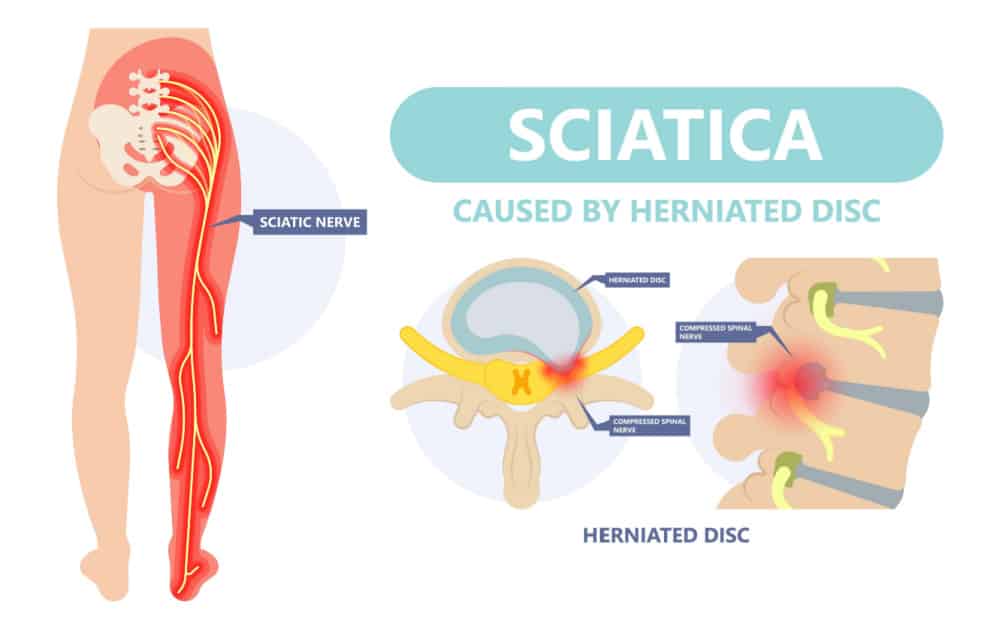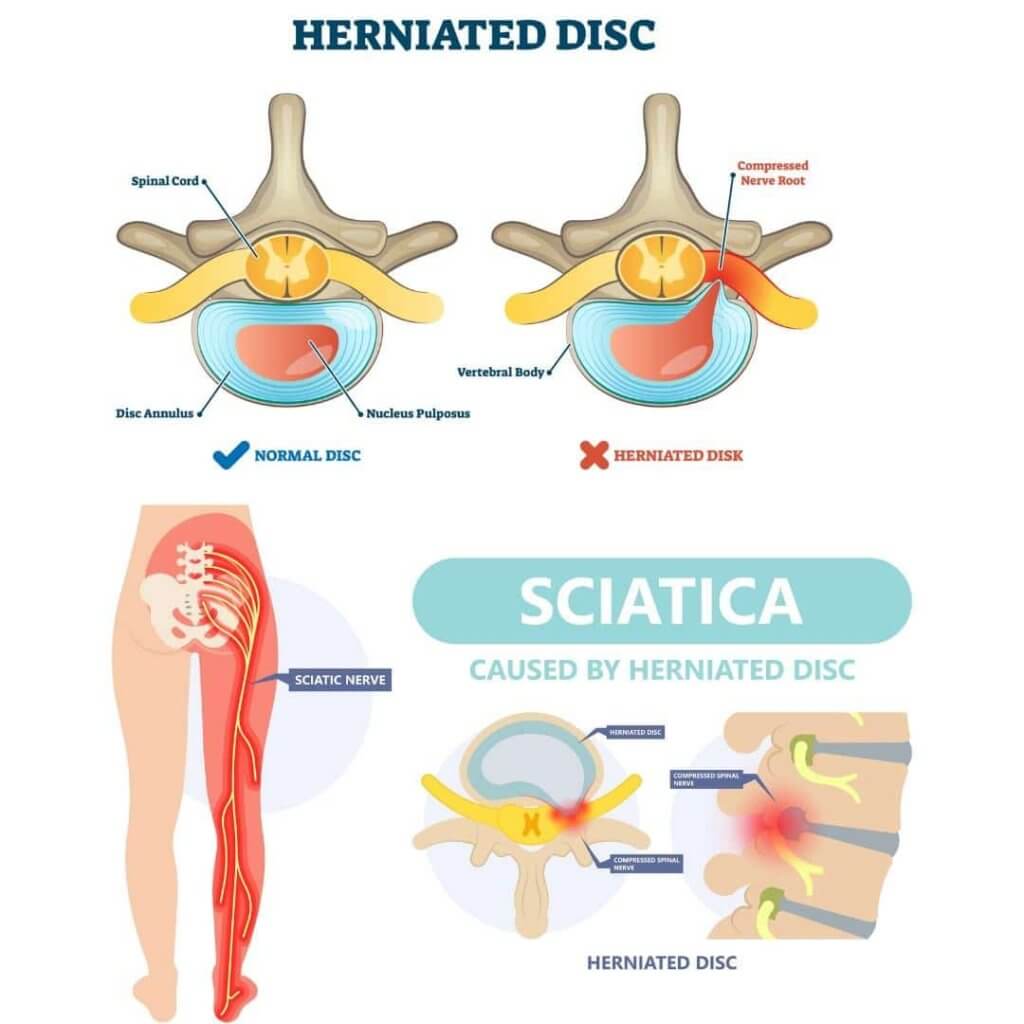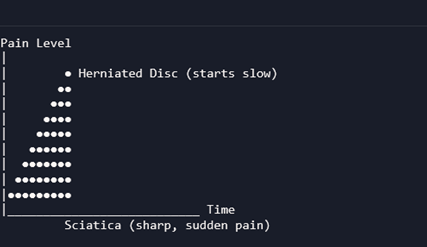Herniated Disc vs. Sciatica: What’s the Difference?

herniated disc and sciatica
Back pain is one of the most common health complaints worldwide. Two terms often heard in this context are herniated disc and sciatica. While they’re closely related, they’re not the same. Understanding the difference can help you seek the right treatment and avoid unnecessary discomfort.
What Is a Herniated Disc?
Your spine is made up of bones called vertebrae, and between each vertebra is a soft cushion called a disc. These discs act like shock absorbers, helping you bend and twist comfortably.
A herniated disc (also called a slipped or ruptured disc) happens when the soft inner gel of the disc pushes out through a tear in the outer layer. This bulge can press on nearby nerves and cause pain.
Common Symptoms:
- Pain in the neck or lower back
- Tingling or numbness in arms or legs
- Muscle weakness
- Pain that worsens with movement
Herniated Disc MRI Illustration
What Is Sciatica?
Sciatica is not a condition—it’s a symptom. It refers to pain that travels along the sciatic nerve, which runs from your lower back down each leg. Most often, sciatica is caused by a herniated disc pressing on the sciatic nerve.
Sciatica Symptoms:
- Sharp, shooting pain down one leg
- Burning or tingling sensations
- Pain worsens when sitting or standing
- Muscle weakness in the affected leg
How Are They Connected?

A herniated disc is one of the most common causes of sciatica. When the disc bulges and presses on the sciatic nerve, it triggers the radiating pain we associate with sciatica. So while they’re different, they’re often linked.
Comparison Table
| Feature | Herniated Disc | Sciatica |
| What It Is | Disc bulge pressing on nerves | Nerve pain from compression |
| Pain Location | Neck, back, or limbs | Lower back, buttocks, down one leg |
| Type of Pain | Localized, dull or sharp | Radiating, burning, shooting |
| Cause | Disc rupture or wear | Pressure on sciatic nerve |
| Treatment | PT, meds, surgery if needed | PT, pain relief, nerve decompression |
Treatment Options
Non-Surgical Treatments:
- Physical therapy
- Ice and heat packs
- Pain-relief medications
- Stretching and posture correction
Advanced Treatments:
- Steroid injections
- Chiropractic care
- Microdiscectomy (surgery to remove disc material)
Graph: Pain Progression

This graph shows how sciatica pain often starts suddenly and radiates, while herniated disc pain may begin as localized discomfort and build gradually.
Risk Factors
- Aging and wear-and-tear
- Sitting for long hours
- Poor posture
- Heavy lifting
- Obesity
- Lack of exercise
When to See a Doctor
You should get medical help if:
- Pain doesn’t go away after a few weeks
- You feel numbness or weakness
- You lose control of your bladder or bowels
- Pain is stopping you from doing daily activities
Prevention Tips
- Maintain good posture
- Exercise regularly, especially core strengthening
- Avoid lifting heavy objects improperly
- Stay hydrated to keep spinal discs healthy
- Use ergonomic furniture at work
Related Reading:
Explore more spinal health tips from Dr. Gerry Nastasia’s blog:
Dr. Gerry Nastasia Blog
Herniated Disc Chiropractor: A Comprehensive Guide to Relief and Recovery
Sciatica Pain Relief: How Chiropractors in Dubai Can Help
Final Thoughts
Understanding the difference between herniated disc and sciatica helps you take control of your health. Whether your pain is sharp and shooting or dull and constant, the right diagnosis leads to the right treatment—and relief.
Most people recover with conservative care, but early diagnosis is key. Don’t ignore persistent back pain. Your spine supports everything you do—treat it with care.
